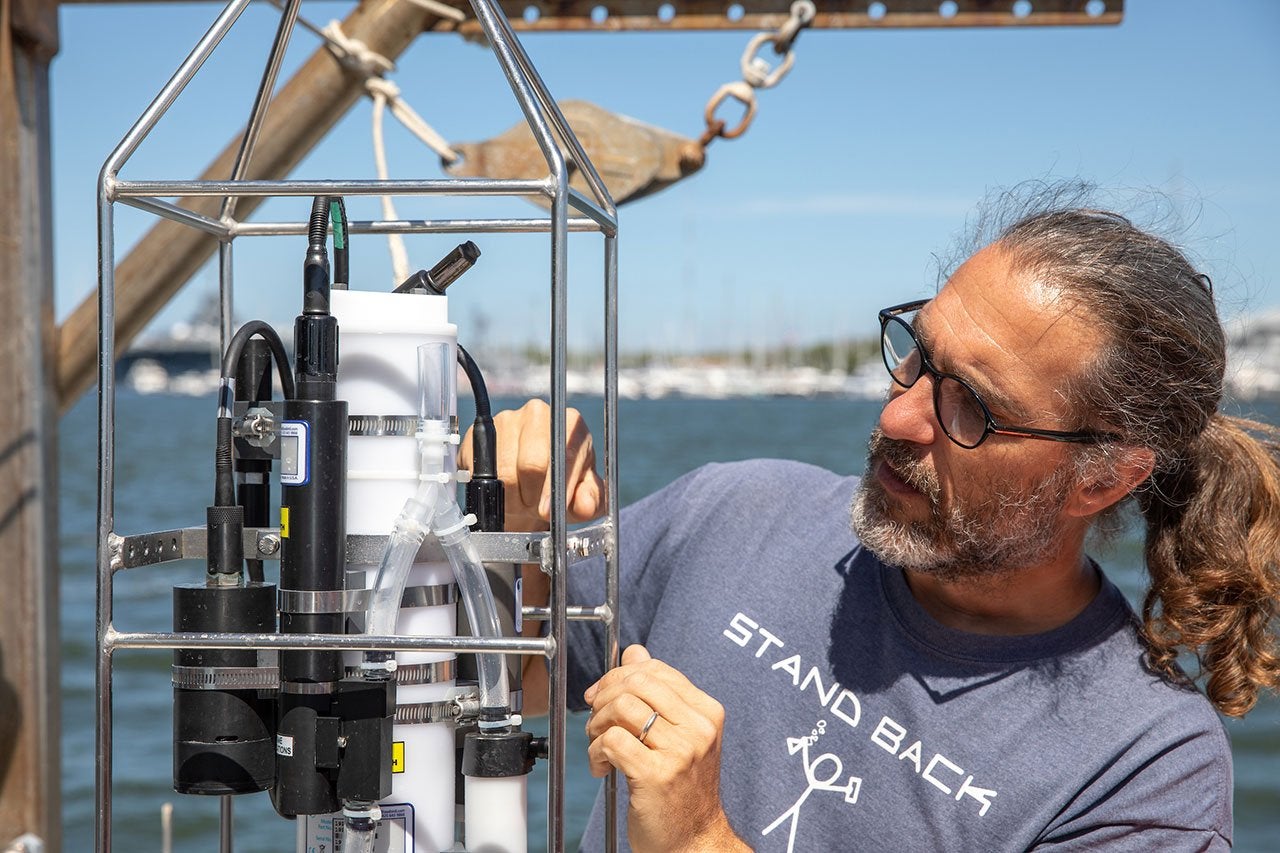Above: Gorka Sancho inspects equipment while conducting research in the Atlantic Ocean off the coast of Charleston.
As an avid fisherman, Gorka Sancho knows the thrill and excitement of spending quality time on the water. As a marine biologist, he knows that long-term conservation changes are needed immediately to ensure those feelings are preserved for many years to come.
Sancho is one of 22 scientists from across the country who recently co-authored a sweeping new study of the Marine Protected Areas (MPA) in the United States. The report, published in the journal Frontiers in Marine Science, identifies significant gaps in the MPA program that leave critical marine systems vulnerable to ecological pressures. While over 96% of the total MPA areas are located in the central Pacific Ocean, only 1.9% of U.S. waters outside the central Pacific benefit from any MPA protections. That means that a vast majority of the mid-Atlantic coast is currently unprotected.
The College Today recently spoke with Sancho about the study and why action is needed now to protect these marine areas.
Why are marine protection areas important?
Marine Protected Areas or MPAs are an important tool to ensure long term protection of the ocean from destructive and extractive activities. When effectively and equitably planned and managed, MPAs have been shown to bring broad ecological and social benefits that can extend to local communities, fisheries and economies. Some benefits from highly protected MPAs include the protection of marine biodiversity, the waters support more and bigger fish, more diverse ecosystems, protection of coastal marine habitats which can sequester and store carbon, buffer communities from waves and storm surge, and improve human well-being. Equitable, effective MPAs can provide long-term support for livelihoods, cultural identity, and physical, mental and emotional health.
Why is it important to expand the current size of the marine protected areas?
Larger MPAs can include in their boundaries different ecosystems and essential habitats for certain species, making them more resilient, but well-connected networks of smaller MPAs can achieve similar results. It is not only about size and number, location, representativeness and level of protection are also very important factors to determine the ultimate effectiveness of MPAs.
The study shows that a vast majority of the mid-Atlantic coast is unprotected. What kind of impacts are we seeing in this unregulated region?
Fishing pressure is one of the main human caused-impacts, which reduces the abundance of certain species of fishes and crustaceans and alters ecosystem function. While U.S. fisheries are well managed, their primary goal is sustaining long-term production of targeted species, not the safeguarding of biodiversity. Certain fishing techniques, such as bottom trawling, can cause the destruction of sea floor habitats and greatly affect non-targeted communities. In combination with the effects of climate change (warming waters, acidification, de-oxygenation, sea level rise) and human coastal development (coastal urbanization, pollution, eutrophication, etc.), many marine habitats along the U.S. Atlantic coast are in regression or endangered.
How is this research related to the conservation goals laid out in the Biden Administration’s America the Beautiful initiative?
MPAs address three goals set forth by the America the Beautiful initiative: enhancing resilience in the face of climate change, preventing nature loss and enhancing public access to nature.
What will happen if we do not increase marine protection areas?
Without new MPAs, we will continue down our present path of destruction and degradation of marine ecosystems and biodiversity. Nearly every corner of our ocean has been touched by human impact or extraction, with over two-thirds of it significantly altered by human activities. For example, in the U.S., the Florida Keys reef tract has lost nearly 98% of its coral cover. And let’s not forget that many people rely on the ocean’s resources and habitats for food, oxygen, jobs, medicines, recreation, mental and spiritual health, cultural traditions and belonging, protection from storms and flooding, among other benefits.
Anything you want to add?
MPAs are a powerful tool to reverse our present trajectory of the threats to our ocean and communities now, and ensure the long-term well-being of future generations of humans.





